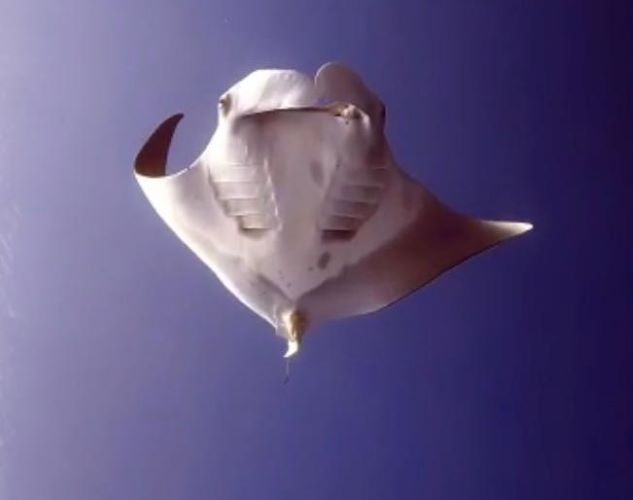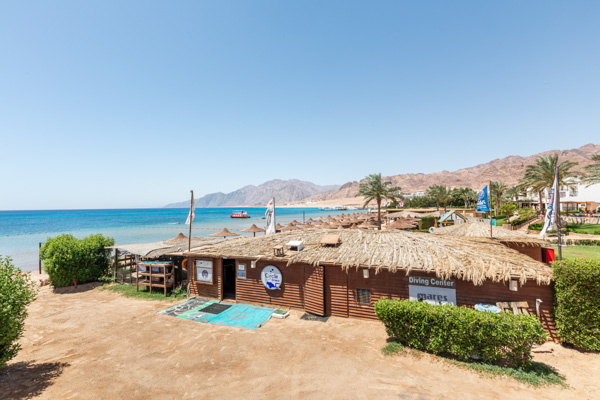The Most Magnificent Manta Ray

The Most Magnificent Manta Ray
The word Manta is a Spanish word that means blanket, given
to these magnificent creatures for their huge diamond shaped bodies. A group of
rays is usually called a “fever” of rays but the mighty Manta ray joins its
forces with other mantas they become a “squadron of mantas”
Manta rays are one of the most intelligent animals in the
ocean, it is believed they are self-aware and are the only fish to have passed
the mirror test. Two mantas were exposed to a mirror neither one treated the
mirror like another manta. One manta watched itself as it blew bubbles in the
mirror, and both took a sharp interest in their reflections and contorted their
bodies into unusual positions. Some believe this is evidence that they knew
what they were seeing, but not everyone is convinced.
They have a highly developed long term memory and have shown
that they can make a mental map of their environment using smells and visual
clues. The Manta Ray has the largest brain-to-body weight ratio of any living
fish and it is thought that this is part of the reason why they are so
inquisitive, and it is also believed that they will remember you.
Mantas are covered in a mucous, as are most fish, that
protects them from harmful bacteria, if they are touched by us the oils on our
skin can remove some of that mucous leaving the manta vulnerable to illnesses
and lower or damage their immune system. Look don’t touch !!!
Popular belief is that Mantas are only zooplankton eaters
but recent studies show that only 25% of their diet is plankton and Mantas are
actually proficient hunters and get the other 75% of their food from other
sources.
Could Sharm El Sheikh be a potential nursey for Mantas? In a
study that was led by Kaust researchers including Anna Knochel they identified 267
individuals from 395 sightings in Egypt, Saudi Arabia, Sudan, Jordan and
Israel, from 2004 to 2021. It was noticed that the rays were really young and
were small. 27 young males were identified and a further possible 29 juvenile
females, the young males were regularly spotted in Sharm EL Sheikh suggesting
that we have a nursery ground in the area. The only other known nursery ground
for oceanic manta rays in the Gulf of Mexico. The movement of these majestic
creatures showed that they would travel from one side of the red sea to the
other.
The female manta will give birth to a live pup which when
born will have to survive with no parental care. Females will be pregnant for
up to 13 months and will only have one possibly 2 pups. They will only give
birth every couple of years and will live for 40-50 years although to do so
much like a shark they will need to “just keep swimming” allowing water to
continuously flow over their gills. The mating between a male and female is
quite curious. The male will often start to shadow the female’s movements from
directly above her, using his unfurled cephalic fins to rub her head, often the
female will then move at an accelerated speed forward leading the male is a
high speed dance around the reef attracting other males to join the mating
ritual. When this high speed chase is over and there is a winning male he takes
her pectoral fin into his mouth and holds on with his tiny row of teeth as he
holds tight to this fin he rolls belly to belly with the female to insert his
claspers into her cloaca and 30 seconds later the deed is done. The curious
aspect of this is it is shown by the scrapes and markings on many females that
the male seems to always take the females left fin.
Mantas leap out of the water and this has baffled scientists
for many years, as yet they are not quite certain as to why they do it but some
theories are that the large noise or vibration that can be heard a long way
underwater which is made when they land might be a call to other isolated
individuals to indicate their location, or to show strength over another group
or even to show a lady mantas how impressive they are.
We sometimes make up elaborate reasons why an animal does
something when we don’t know the real reason and mantas have been spotted
jumping out of the water in groups for hours at a time, but it could be as
simple as they just enjoy leaping out of the water and are having fun !!!
So for the safety of these magnificent creatures we should
know how to interact with them wherever you are in the world – here is a 10
step guide taken from www.mantatrust.org website
1. Enter the water quietly and calmly, no closer
than 10 meters / 33 feet from the manta ray.
2. Keep your fins below the water's surface when
swimming. Splashing and noise can scare mantas away, so you want to approach the
manta as quietly as possible.
3. Do NOT approach closer than 3 meters / 10
feet. Instead, remain still and let the manta come to you.
4. You should approach the manta from their side,
giving them a clear path ahead.
5. As the manta swims past you, do NOT chase after
them! You will never catch up to a manta anyway, and will likely scare
them away in the process.
6. Do NOT touch a manta ray. You will ruin the
encounter and may receive a fine depending on local laws.
Specifically, for
scuba divers.
7. Chances are if you are diving with a manta, you will be
encountering them on a cleaning station. These are important sites for manta
rays.
During the encounter, remain at the side of the
cleaning station. Do NOT swim onto the main cleaning area.
8. Keep low and hover close to the seabed,
but be careful not to damage the reef beneath you. Depending
on the dive site, you may need to stay in an area designated for divers.
9. When a manta swims towards you, do NOT block
their path as they swim overhead. Stay low and stay where you are.
10. In addition to the above steps, be sure to follow
any extra rules, laws and regulations that may be specific to the
manta site you're visiting.
Identification
Here in Egypt we have 2 types of Mantas – the Reef Manta Manta
alfredi and the Oceanic Manta Manta birostris not to be confused with the Devil Ray which has a much
more pointed and slender head than the manta and is much smaller in size.
Although they are very similar to look are there are a few
subtle differences - The Oceanic Manta usually has no spots on its underbelly
except maybe a small cluster that is central on its belly but not between its
gills, on its back you can usually find a T shaped white mark across it’s
shoulders and has a distinctive black white divide between the colours whereas
the Reef Manta is usually characterized by Y shaped white markings on its
shoulders which is more of a gradient from white to black. The reef Manta has
unique spots found all over its underbelly – these spots on both mantas are
similar to a human finger print and are unique to the manta. To help with
researching these amazing intelligent animals if you have the privilege to
encounter one whilst you have a camera at hand try to get a photo of the
underbelly, try to get the whole underside in the shot, unfortunately although
Mantas can be quite curious if not chased and are likely to come closer if you
stay still, encounters are often fleeting so the primary area to capture is
between the gills of a reef manta and the belly of an oceanic manta.


